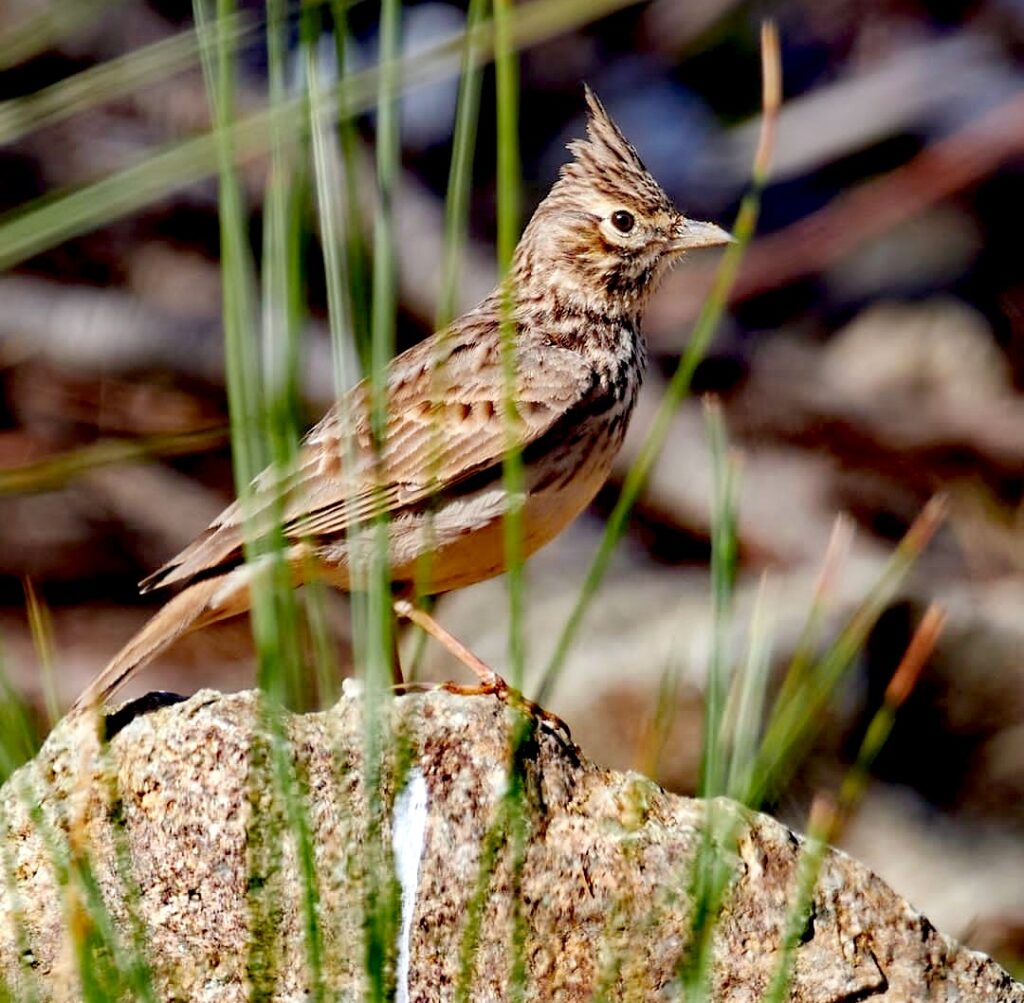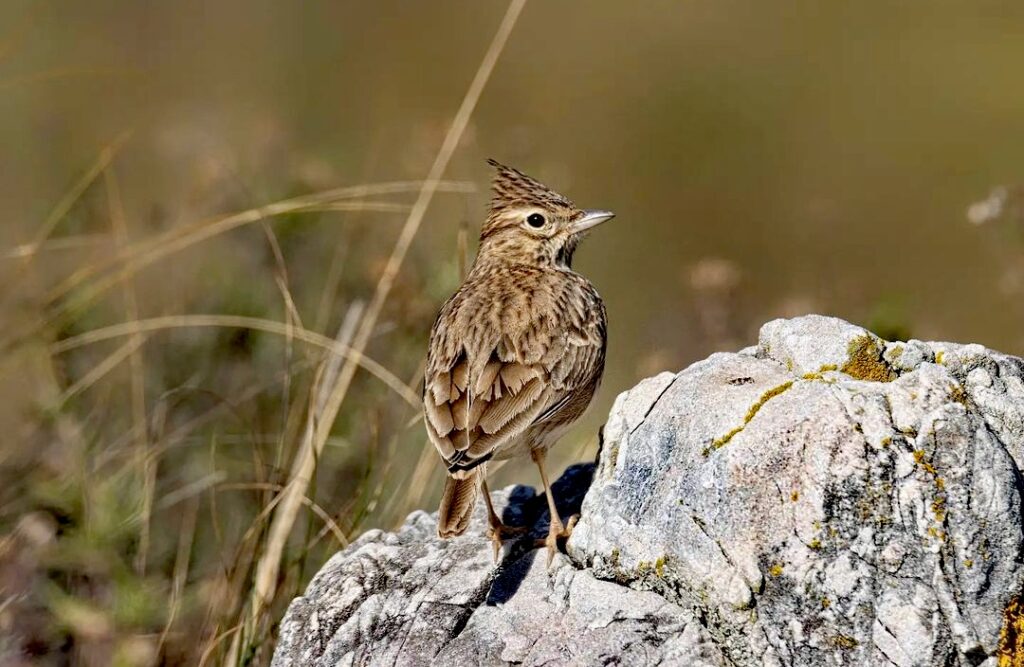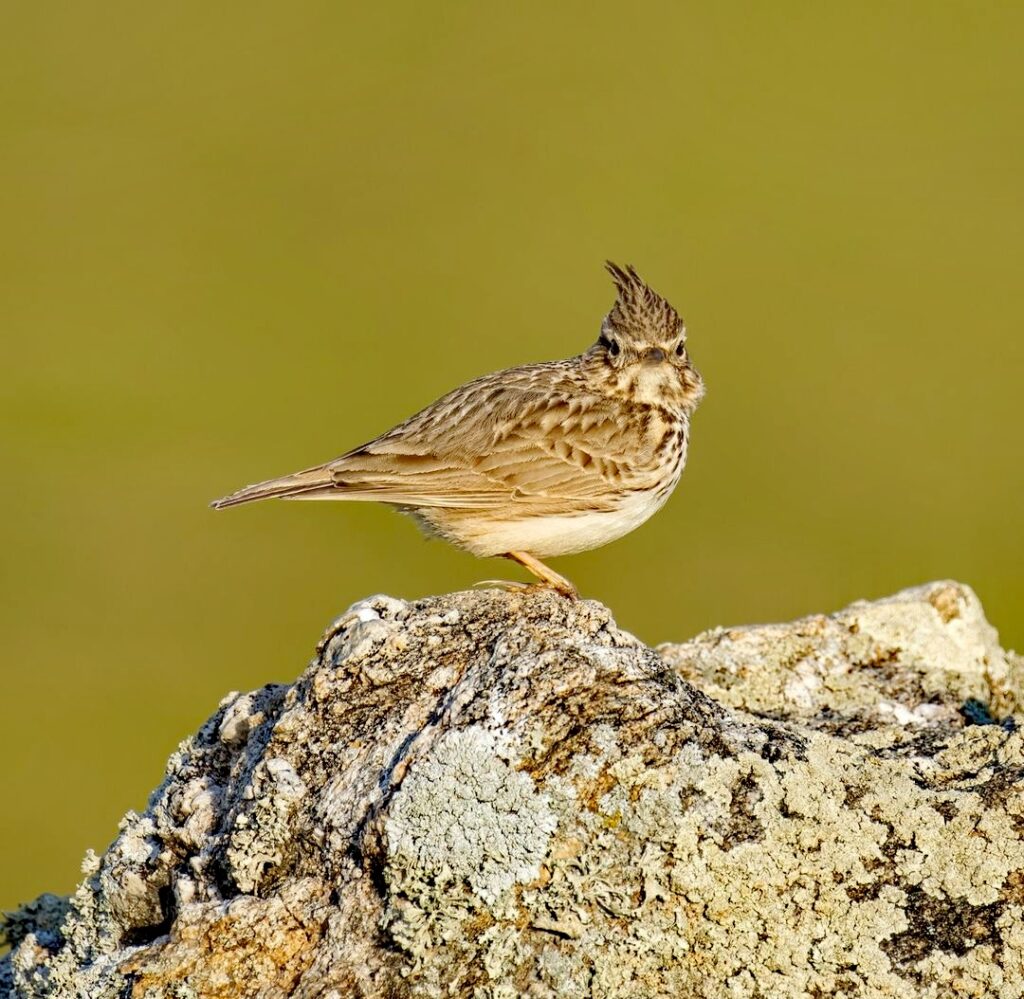THEKLAS LARK
Spotting a Thekla’s Lark singing from a prominent perch or darting across the open landscape is a delightful experience for birdwatchers exploring the diverse habitats of Morocco.
Appearance: Thekla’s Lark is a medium-sized lark with a relatively long tail and a stout, slightly curved bill. It has a cryptic plumage, with sandy brown upperparts streaked and mottled with darker markings, providing excellent camouflage against its arid habitat. The underparts are paler and generally unmarked. It has a distinctive crest on its head that it can raise or lower depending on its mood.
Habitat: In Morocco, Thekla’s Lark inhabits a variety of open habitats, including semi-arid scrublands, grasslands, rocky slopes, and agricultural areas with sparse vegetation. It prefers areas with short grass or bare ground, where it can forage for food and build its nest.
Diet: Thekla’s Lark is primarily insectivorous, feeding on a variety of insects and other invertebrates found in its habitat. It forages on the ground, using its bill to probe and pick at the soil in search of prey. It may also consume seeds and small plant matter, especially during the non-breeding season when insect prey may be scarce.
Behavior: Thekla’s Lark is often seen perched on elevated spots, such as rocks or low shrubs, where it can survey its surroundings for prey or potential threats. It is a relatively sedentary bird, with individuals often remaining within their territory year-round. During the breeding season, males may perform elaborate song flights to attract mates and establish their territories.
Breeding: Breeding typically occurs during the spring and summer months, with pairs establishing territories and building nests on the ground or among vegetation. The female lays a clutch of eggs, usually numbering between three to five, and both parents share the responsibility of incubating the eggs and caring for the young.
Conservation: Thekla’s Lark is not considered globally threatened, but like many bird species, it may face threats such as habitat loss and degradation due to human activities, including agriculture, urbanization, and overgrazing. Conservation efforts focused on habitat protection, sustainable land management, and monitoring populations are essential for ensuring the continued presence of this charming bird in Morocco and beyond.


